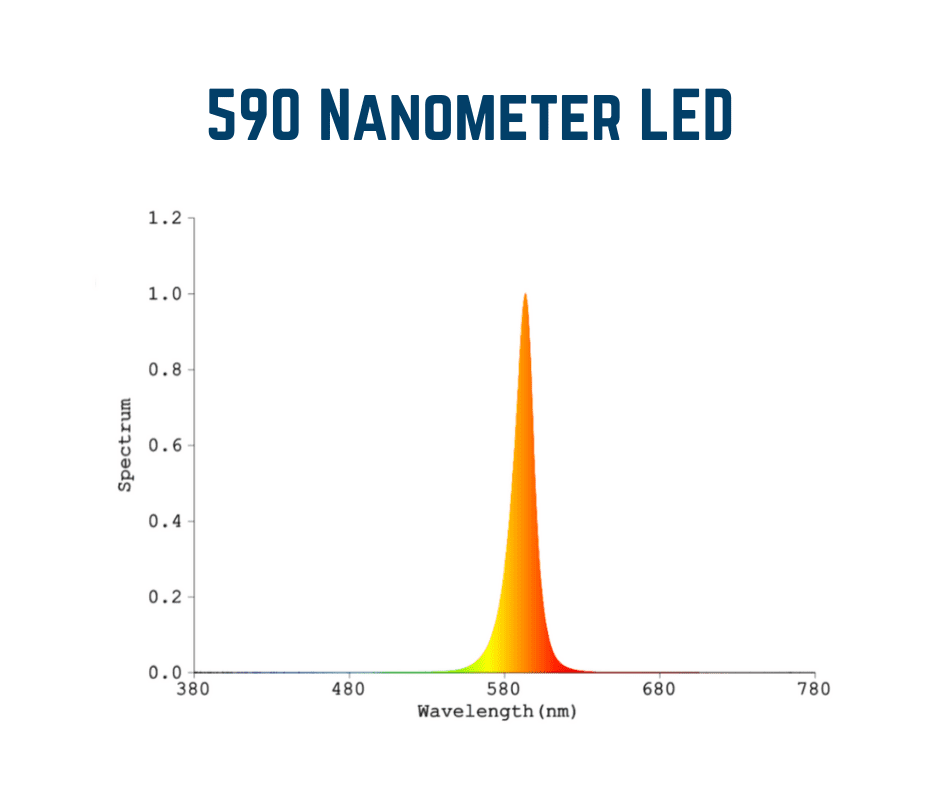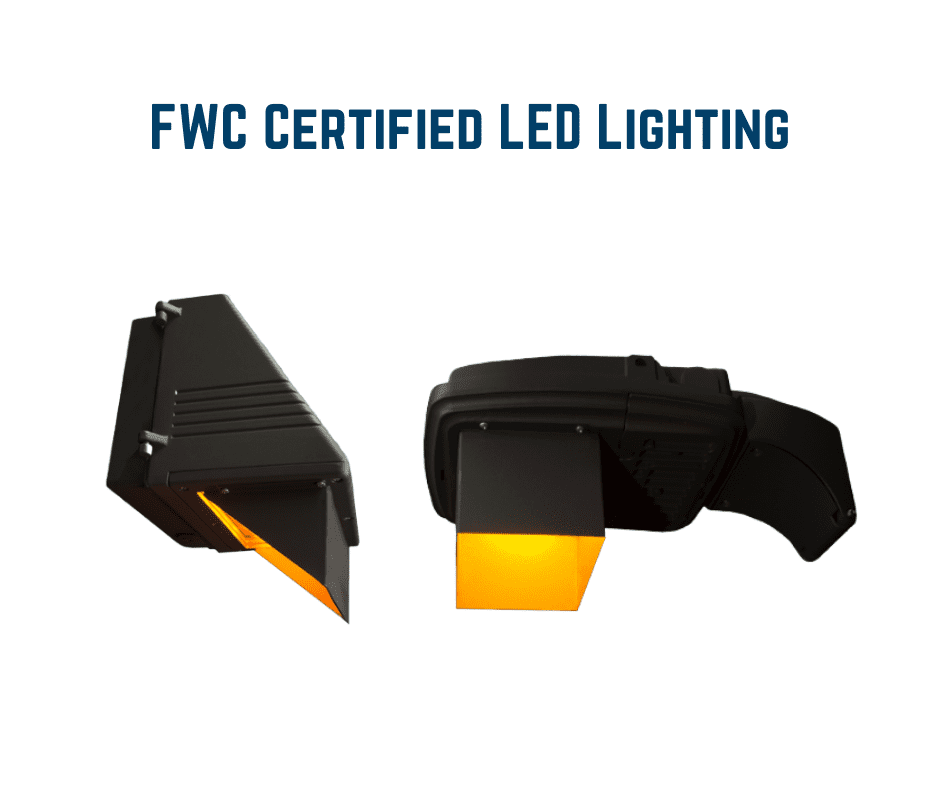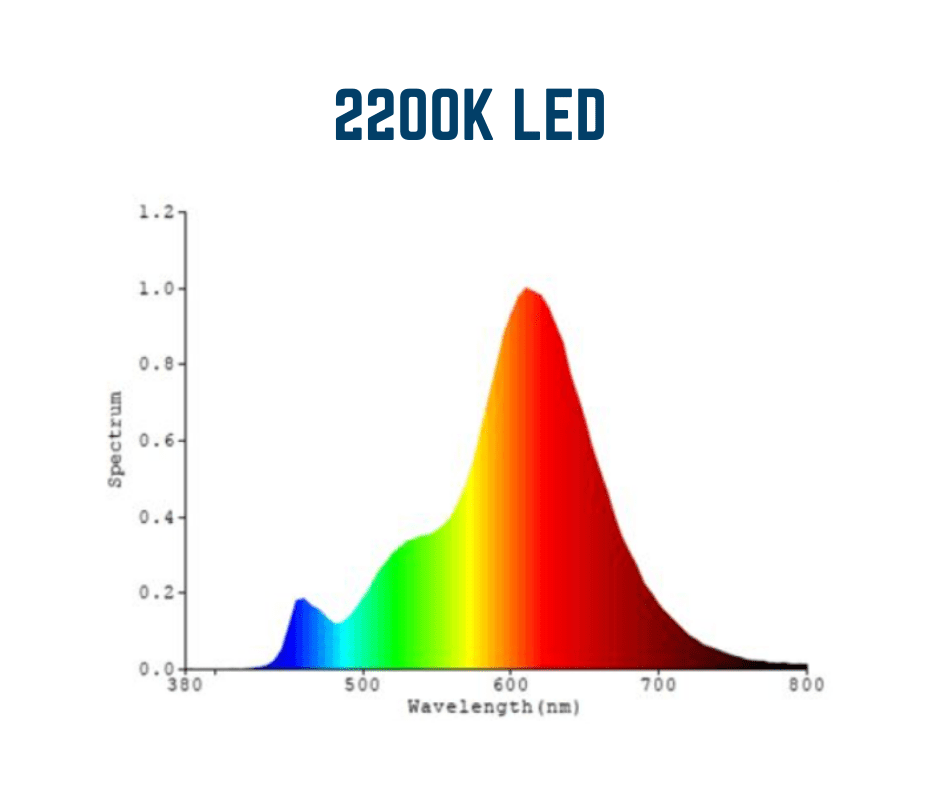590nm Light: Amber LED Fixtures – FWC, PC Amber, and 2200K
Introduction to 590nm Light
590nm light, commonly known as amber light, occupies a unique position in the visible spectrum, nestled between yellow and orange. This specific wavelength has garnered significant attention for its diverse applications across various fields. From medicine to astronomy and machine vision, 590nm light offers unique properties that make it highly valuable. Its warm, soothing hue is not only gentle on the human eye but also minimizes disruption to wildlife, making it an eco-friendly lighting option. In this section, we will explore the fascinating world of 590nm light and uncover its myriad uses and benefits.
What is Amber LED Lighting?
Amber LED lighting refers to a type of lighting that emits a warm, orange-colored light, typically in the 590nm wavelength range. This specific wavelength makes it a popular choice for various applications, including wildlife protection, dark-sky compliance, and skin treatments. The warm hue of amber light is more comfortable for the human eye compared to harsher blue lights, making it an excellent option for both indoor and outdoor lighting. Its unique properties ensure minimal disruption to wildlife and provide a soothing ambiance that can enhance skin health and overall well-being, ultimately improving the quality of life for individuals.
What are these LEDs Used For?
As lighting specialists, we receive many questions about the various types of LED light. One of these categories is what is known as amber LED. Amber LED may refer to several things. Although one might think it just describes any orange-colored light that’s easy on the eyes, there are so many more aspects of this versatile color than many people might assume. Amber LED is not a monolith, and although it may look uniform to the untrained eye, there are many different applications and wavelengths of this category of light.
Key Takeaways
-
-
Diverse Applications: Amber LEDs are used in a variety of fields, including wildlife protection, dark-sky compliance, and street lighting, showcasing their versatility.
-
Specific Types for Specific Needs: Different types of amber LEDs, such as PC Amber, 590 Nanometer Amber, and 2200K, cater to specific requirements like color rendering and environmental impact.
-
Environmental and Functional Benefits: Amber LEDs not only provide efficient lighting solutions but also help in reducing light pollution and protecting wildlife, making them an environmentally friendly choice.
-
Benefits Of Amber LED Lighting
Amber LED lighting offers several notable benefits:
-
Wildlife Protection: The specific wavelength of amber LED lighting is less visible to certain wildlife, such as sea turtles, making it an ideal choice for outdoor lighting in conservation areas.
-
Dark-Sky Compliance: Designed to minimize light pollution, amber LED lighting is favored by astronomers and stargazers for its ability to keep the night skies clear.
-
Skin Treatments: Amber LED lighting has been shown to have positive effects on skin health, including reducing inflammation and promoting collagen production.
-
Energy Efficiency: Amber LED lighting is highly energy-efficient, helping to reduce energy consumption and lower utility costs.
These benefits make amber LED lighting a versatile and eco-friendly option for various applications.
Applications of Amber LED Lights
Amber LED lights can be used for, but are not limited to, the following applications:
- Meeting Florida Fish & Wildlife Conservation Commission regulations (FWC)
- Other Turtle and Wildlife Protection
- Decorative purposes & ambient lighting
- Military and astronomy
- Dark-sky friendly requirements
- Replacing high-pressure and low-pressure sodium lights
This list is far from all the documented uses of different types of amber LEDs, but they are some of the most popular ones. What are the different kinds of amber LEDs and what are they used for? Read on to find out.
PC Amber (1700K)
PC Amber, or 1700K, is a specific type of amber LED light that is a suitable replacement for low-pressure sodium lighting, which is an outdated style of induction lighting. It has a broader spectrum and as a result, a better color rendering index than LPS, which can be seen in the chart to the right indicating the difference
Replacing low-pressure sodium is far from the only use for PC amber LED. In particular, PC amber is used for dark-sky applications such as in Hawaii or Flagstaff. Many states and jurisdictions now require the use of PC amber LED that is also fully shielded and under a certain lumen output in order to keep the night skies clear.
This is especially important to astronomers because certain wavelengths of UV light can obscure the stars and make telescope viewing impossible. PC amber is a perfect solution for this. PC Amber LEDs can also be customized for machine vision applications due to their specific wavelength and color rendering properties. Read more about PC Amber Lights here.
590 Nanometer Amber
The second major category of amber LED is 590 nanometer LED. This is also a specific wavelength of light that appears as a dim orange light to the human eye, but it can sometimes be perceived as green due to the subjective nature of color perception. However, 590-nanometer lighting has some unique properties that make it highly useful for certain outdoor applications.
590 nanometer amber LED is used for turtle and wildlife-friendly applications that do not require shielding, but do require a specific type of lighting. Turtles and other types of wild animals cannot see light emitted from a 590-nanometer fixture, making it a great choice for lighting parks, trails, beachside areas, and other places where nature and wildlife should not be disturbed.
Although outdoor light fixtures in 590-nanometer amber are orange lights, they do not allow for good color rendering so this may be an important factor to note in choosing what type of amber lighting you need. Read more about 590 nm Amber Lighting here
FWC Certified Lighting
FWC-certified lighting is a specific kind of 590-nanometer LED lighting that also makes use of shields to direct the light from a fixture downward. For a light fixture to be considered FWC compliant, it must be three things:
Long: The fixture must come in a long wavelength (which 590 nanometer is) so that sea turtles and other animals cannot see the light or be disturbed by it.
Low: FWC-certified fixtures must be mounted low to the ground. The lower, the better, to prevent uplight or any similar light pollution.
Shielded: The fixture is surrounded by a metal shield, or baffle, which directs the light only downward and prevents backlight and uplight.
FWC-certified lighting is an effective treatment for minimizing the impact of artificial lighting on wildlife.
The full criteria list for whether or not a fixture is considered FWC-compliant can be found here on the Florida Fish and Wildlife Conservation Commission’s website. Read more about FWC Turtle Lighting here
2200K (HPS Color)
Why is 2200K on here, you might be asking? Recently, LED lighting technicians and specialists have started to refer to this Kelvin (color temperature) as HPS color because it replaces traditional high-pressure sodium lights. It is also known as “amber white” because it is technically in the amber LED light family due to its warm orange glow. 2200K has the broadest and highest CRI rating of all amber LED types. 2200K can be used both indoors and outdoors, and it was created to replace high-pressure sodium lighting for streetlights. The benefit of 2200K is that the LED version lasts a far longer time and usually has a higher lumen output than traditional high-pressure sodium.
Shop 2200K HPS ColorIn addition, if you are looking for the aesthetics of amber light for your project but don’t need a specific nanometer, this would be your best bet as it’s versatile and has a better color rendering index than the aforementioned types of amber LED.
Health Benefits of Amber LED Lighting
Amber LED lighting is not only beneficial for the environment but also offers several health advantages:
Skin Treatments
Amber LED lighting has been shown to have significant benefits for skin health, including:
-
Reducing Inflammation: The anti-inflammatory properties of amber LED lighting can help reduce redness and inflammation in the skin, making it a valuable tool for skin treatments.
-
Promoting Collagen Production: By stimulating collagen production, amber LED lighting can improve skin elasticity and reduce the appearance of fine lines and wrinkles.
-
Improving Skin Tone: Amber LED lighting can help even out skin tone and reduce the appearance of hyperpigmentation, leading to a healthier and more radiant complexion.
These treatments can enhance the quality of life for individuals suffering from skin issues by providing non-invasive alternatives to surgery and aiding in the healing process from conditions such as melasma, rosacea, radiation dermatitis, and scars.
Eye Health
Amber LED lighting can also positively impact eye health:
- Reducing Eye Strain: Unlike blue light, amber LED lighting is gentler on the eyes, helping to reduce eye strain and fatigue, especially during prolonged exposure.
- Improving Vision: By reducing glare and enhancing contrast, amber LED lighting can improve overall vision and comfort for the human eye.
Hair Loss
Amber LED lighting has also been found to support hair growth:
- Promoting Hair Growth: The increased blood flow to the scalp stimulated by amber LED lighting can help promote hair growth.
- Reducing Hair Loss: By reducing inflammation and promoting collagen production, amber LED lighting can help mitigate hair loss and support healthier hair.
Overall, amber LED lighting is a versatile and beneficial lighting option that can enhance skin treatments, support eye health, and promote hair growth, making it a valuable addition to any lighting setup.
Astronomical Applications
Astronomers have long recognized the critical need to minimize light pollution to observe the night sky with clarity. The specific wavelength of 590nm light has proven to be an ideal solution for this challenge. By utilizing 590nm light, astronomers can significantly reduce the interference caused by artificial light sources, preserving the natural darkness essential for accurate celestial observations. This wavelength is less intrusive to the human eye, making it perfect for outdoor lighting in observatories and stargazing areas. The result is a clearer, more detailed view of the universe, allowing astronomers to deepen their understanding of the cosmos.
LED Lighting for Specific Needs
The advent of LED technology has revolutionized lighting, offering tailored solutions for various applications. 590nm LED lighting, in particular, stands out for its ability to meet specific needs in fields such as machine vision, skin treatments, and astronomy. For instance, in machine vision, the precise wavelength of 590nm light enhances image clarity and accuracy, crucial for industrial and scientific applications. In the realm of skin treatments, amber light therapy is known to promote skin health by reducing inflammation and stimulating collagen production. Additionally, its use in astronomical applications helps reduce light pollution, making it a versatile and valuable lighting option for diverse needs.
Conclusion
Amber LEDs offer many applications and benefits beyond their appealing orange hue. Amber LEDs are crucial in various fields, from meeting wildlife protection standards to enhancing night-sky visibility for astronomers. Whether it is the highly specific 590-nanometer amber used for turtle-friendly lighting or the versatile 2200K amber white for streetlights, these LEDs provide sustainable and efficient lighting solutions. Understanding the different types and uses of amber LEDs can help you select the perfect lighting for your needs, ensuring functionality and environmental friendliness.
Amber LED Lighting Frequently Asked Questions
You have Amber LED Lighting questions. We have answers. If you have a question that isn’t answered below, contact an Access Fixtures lighting specialist at (800) 468-9925 or click here to visit our customer service page.
What is an Amber LED?
Amber LED refers to LEDs that emit an orange-colored light. They are available in various wavelengths and serve multiple purposes, such as wildlife protection and dark-sky compliance. Amber LEDs are also used in red light therapy for various health benefits, including skin rejuvenation and hair growth.
What are the main types of Amber LEDs?
The main types are PC Amber (1700K), 590 Nanometer Amber, and 2200K (HPS Color). Each type has specific applications and characteristics.
Why are Amber LEDs used in wildlife protection and their impact on the human eye?
Amber LEDs, especially 590 nanometer, emit light that is less visible to certain wildlife, such as sea turtles, preventing disruption to their natural behaviors.
What does FWC-certified lighting mean?
FWC-certified lighting adheres to Florida Fish & Wildlife Conservation Commission regulations, requiring lights to be long-wavelength, low-mounted, and shielded to protect wildlife.
How does PC Amber LED benefit astronomers?
PC Amber LEDs reduce light pollution by minimizing UV light emissions, making it easier for astronomers to observe the night sky.
Can Amber LEDs replace traditional streetlights?
Yes, 2200K Amber LEDs are designed to replace high-pressure sodium (HPS) lights, offering better color rendering and longer lifespan.
What is the difference between PC Amber and 590 Nanometer Amber in terms of specific wavelength?
PC Amber (1700K) is used primarily for dark-sky applications and replacing low-pressure sodium lights, whereas 590 Nanometer Amber is ideal for wildlife-friendly applications due to its specific wavelength that is less visible to certain animals.
How long do Amber LEDs typically last?
Amber LEDs, like most LEDs, have a long lifespan, often exceeding 25,000 to 50,000 hours of use, which is significantly longer than traditional incandescent or sodium lights.
Are Amber LEDs suitable for indoor use as a replacement for natural light?
Yes, certain types of Amber LEDs, such as the 2200K, can be used both indoors and outdoors, providing a warm, ambient light suitable for various settings.
What does “CRI” mean, and why is it important for Amber LEDs?
CRI stands for Color Rendering Index, which measures the ability of a light source to accurately render colors compared to natural light. A higher CRI in Amber LEDs, like the 2200K, means better color accuracy and visual appeal.
590nm light is a remarkable wavelength that offers a wide array of benefits and applications. Its use in astronomical applications helps preserve the natural night sky, while its potential in machine vision and skin treatments showcases its versatility. As technology continues to advance, the innovative uses of 590nm light are likely to expand, further enhancing its value in various fields. Whether you’re interested in its scientific, medical, or practical applications, 590nm light is poised to make a significant impact in the world of lighting.






